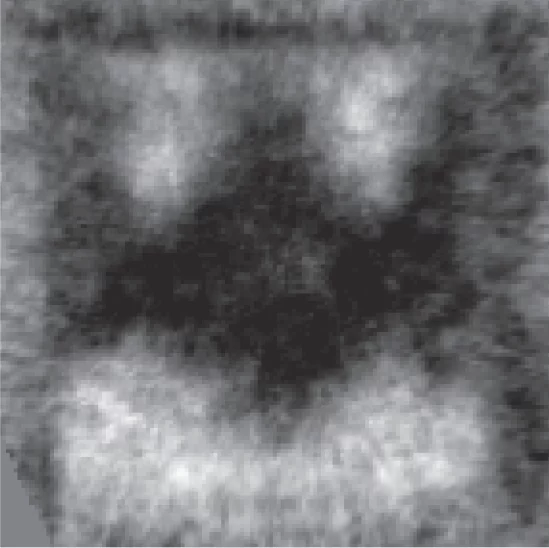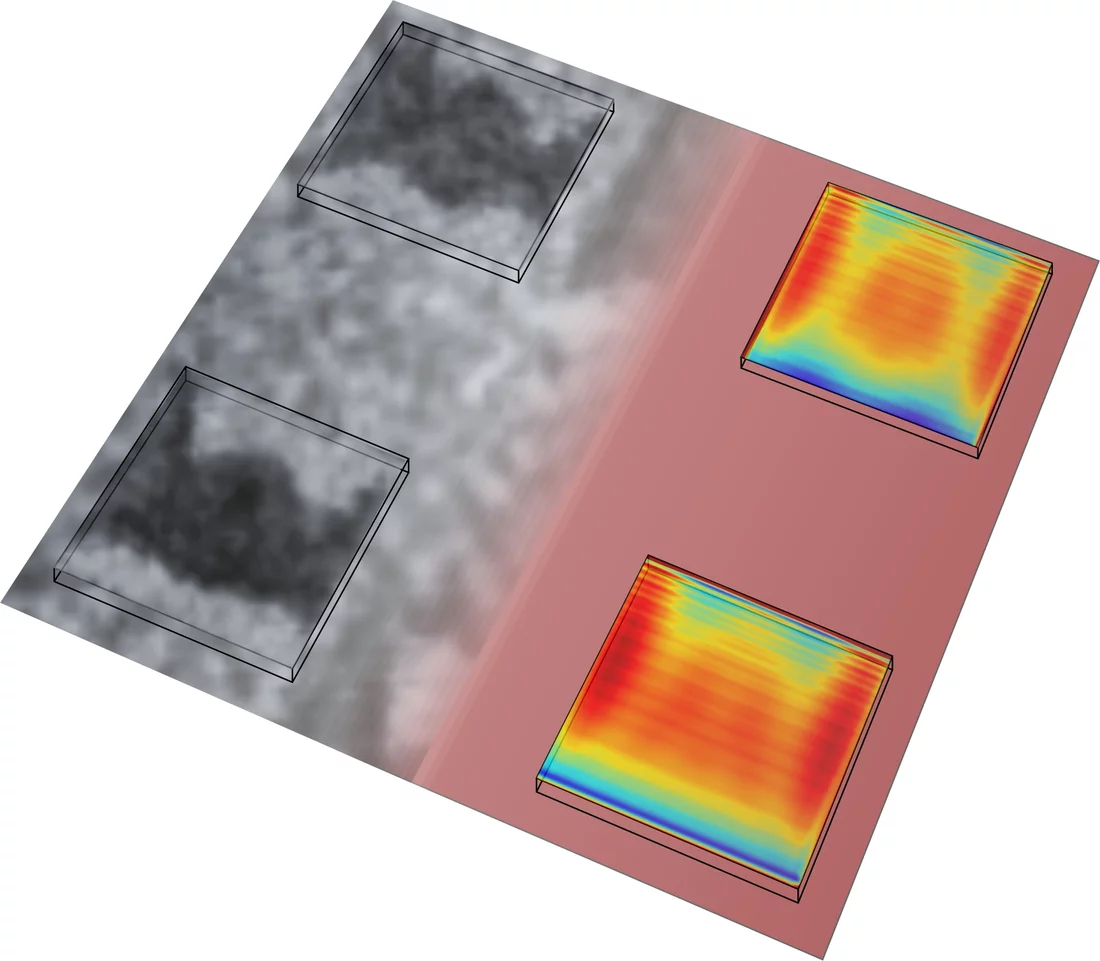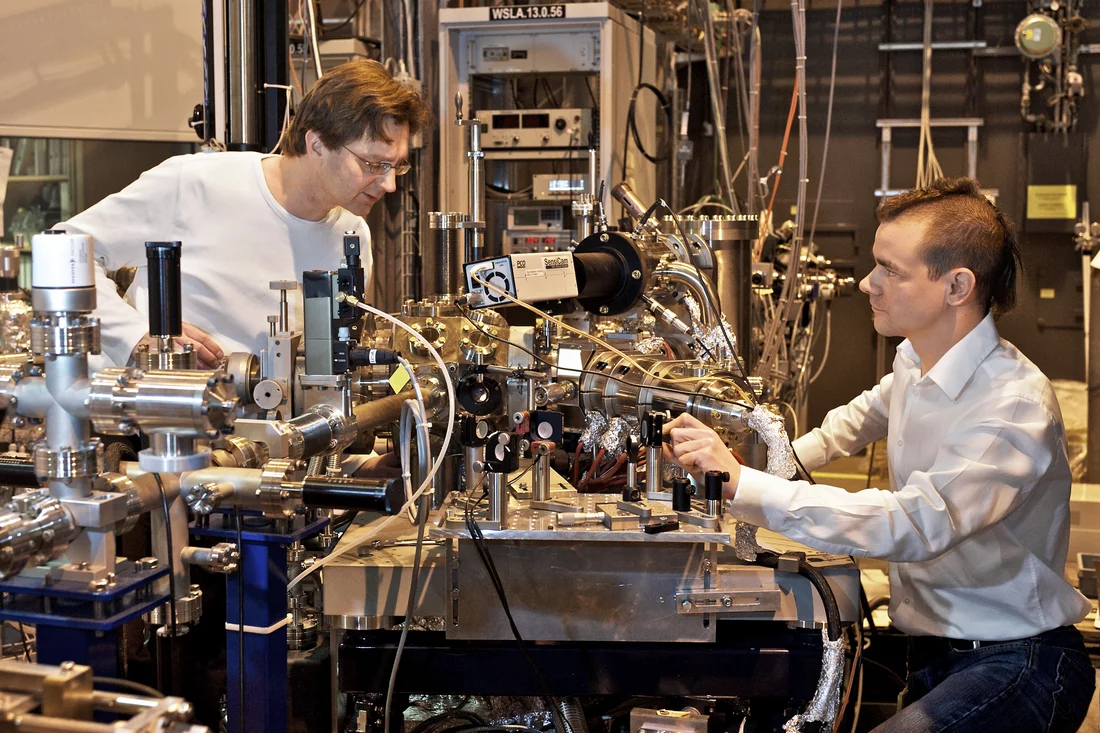Researchers at the Paul Scherrer Institute (PSI) have succeeded in switching tiny, magnetic structures using laser light and tracking the change over time. In the process, a nanometre-sized area bizarrely reminiscent of the Batman logo appeared. The research results could render data storage on hard drives faster, more compact and more efficient.
Computer hard drives store data magnetically. In order to capture larger amounts of data on smaller hard drives, researchers and developers are endeavouring to make the actual size of the magnetic bits and bytes increasingly smaller. With this in mind, researchers from the Paul Scherrer Institute (PSI) rely on the combination of a micro-structured surface and a laser beam.
The surface consists of a regular arrangement of tiny squares made of a magnetic material. In the researchers’ various tests, these squares had a side length of between one and five thousandths of a millimetre. Every square and even a part of a square can be seen as tiny magnet and could thus be a storage bit one day.
Micromagnets reversed with light
In the second part of the unconventional approach, the PSI scientists are able to reverse the magnetic direction of the squares specifically using a laser beam. In today’s hard drives, the magnetic switching and thus the storage of data occurs with a small magnetic head, which glides over the hard drive like the needle on a record player.
The researchers at PSI teamed up with colleagues from the Netherlands, Germany and Japan for the project. Two years ago, the international research team already succeeded in demonstrating that a short, intensive laser pulse can switch micro-magnets hundreds of times faster than a magnetic head. And the laser is lower in energy and thus more cost-effective, too. The trick evidently lies in the fact that the laser light heats up the tiny magnets very quickly and is thus able to convert them into the other state. Using light for magnetic switching clearly works. But why exactly it does is still the subject of debate in the research community,
explains Frithjof Nolting, the lab head on the PSI study.
Snapshots of the reversal
To gain a better understanding of this magnetic reorientation process , the researchers have now developed a time-resolved measurement that enables them to observe the lightning-quick changes one step at a time using x-radiation from the Swiss Light Source (SLS) at PSI. They managed to produce a series of snapshots that were only 70 billionths of a second apart – in other words, at a frame rate per second that is almost 600 million times higher than in motion pictures.
In their series of shots, the scientists were able to observe how the direction of magnetisation changes, i.e. how the tiny magnets are reversed. Initially, their north pole points upwards
and the south pole downwards
. In the end, however, it is the other way round.
A substructure from the comic world
Their astounding observation: although the magnetic squares are so small that the laser pulse used irradiates many squares at once, the magnetisation is not reversed across the board. Instead, substructures form within the illuminated squares. The researchers’ imaging displayed one direction of magnetisation in black and the other in white. When the researchers observed squares with a side length of five micrometres, i.e. five thousandths of a millimetre, they saw a very peculiar magnetic substructure: suddenly, a tiny black Batman logo appeared on a white background.
However, the researchers do not see this as a secret comic message or a problem, but rather as an opportunity. They put the Batman figure down to the effects of the diffraction and interference of the laser light – in a nutshell, the interplay between the light and the micro-squares. More laser light was absorbed in some areas of the squares than others, which is why the magnetic switching only took place there. We have discovered a fascinating interaction,
sums up Nolting.
The hard drive of the future: smaller and faster
Thus, differently shaped magnets could be used to create other figures than the Batman logo. Consequently, not only could every minuscule magnet be used as an individual, writable computer bit, but even only part of one. This could be the way to store even more data on even smaller hard drives one day,
says Loïc Le Guyader, who was also involved in the PSI experiments, and is now working at the Helmholtz-Zentrum Berlin.
However, the researchers did not only record remarkable readings in the tiny size of the substructures, but also in the speed of the magnetic switching process: thanks to the light switching, this reorientation process occurs at lightning speed and is complete in less than 100 billionths of a second.
Smaller and faster – including a small storage bit size and a high magnetic switching speed: the two features that really count in the hard-drive industry. The researchers at PSI may have shown the engineers a way for future developments.
Text: Laura Hennemann
Institutions involved and funding
Researchers from the following institutions were involved in the project: Paul Scherrer Institute, Switzerland; Radboud University Nijmegen, Institute for Molecules and Materials, Netherlands; Helmholtz-Zentrum Berlin für Materialien und Energie GmbH, Germany; College of Science and Technology, Nihon University, Japan. The project was jointly funded by the EU’s Seventh Framework Programme (UltraMagnetron, Femtospin, Fantomas, Femtomagnetism), Dutch research funding (NWO, FOM, STW) and Japanese research funding (MEXT).
About PSI
The Paul Scherrer Institute PSI develops, builds and operates large, complex research facilities and makes them available to the national and international research community. The institute's own key research priorities are in the fields of matter and materials, energy and environment and human health. PSI is committed to the training of future generations. Therefore about one quarter of our staff are post-docs, post-graduates or apprentices. Altogether PSI employs 1900 people, thus being the largest research institute in Switzerland. The annual budget amounts to approximately CHF 350 million.
Contact
Prof. Dr Frithjof NoltingLaboratory for Synchrotron Radiation – Condensed Matter Physics,
Paul Scherrer Institute, 5232 Villigen, Switzerland
Telephone: +41 56 310 – 5111, email: frithjof.nolting@psi.ch
Dr. Loïc Le Guyader
Institute Methods and Instrumentation for Synchrotron Radiation Research,
Helmholtz-Zentrum Berlin für Materialien und Energie, 14109 Berlin, Germany
Telephone : +49 30 8062-14774 E-mail : loic.le_guyader@helmholtz-berlin.de
Original Publication
Nanoscale sub-100 picosecond all-optical magnetization switching in GdFeCo microstructures.L. Le Guyader, M. Savoini, S. El Moussaoui, M. Buzzi, A. Tsukamoto, A. Itoh, A. Kirilyuk, T. Rasing, A.V. Kimel and F. Nolting,
Nature Communications, 12 January 2015,
DOI: 10.1038/ncomms6839



